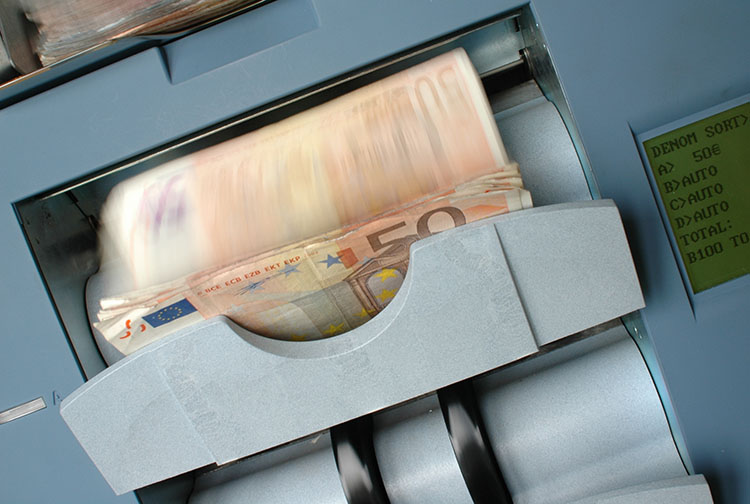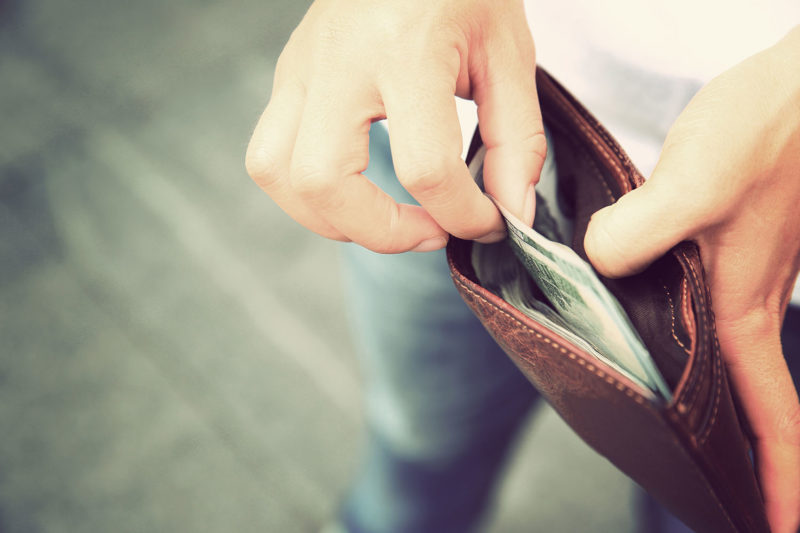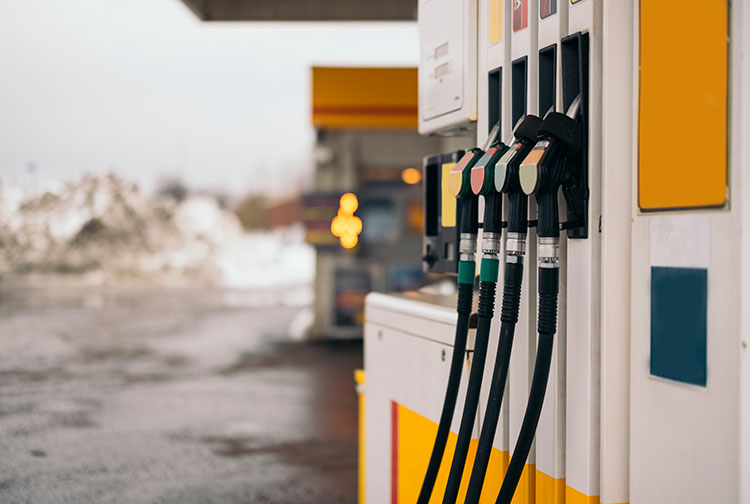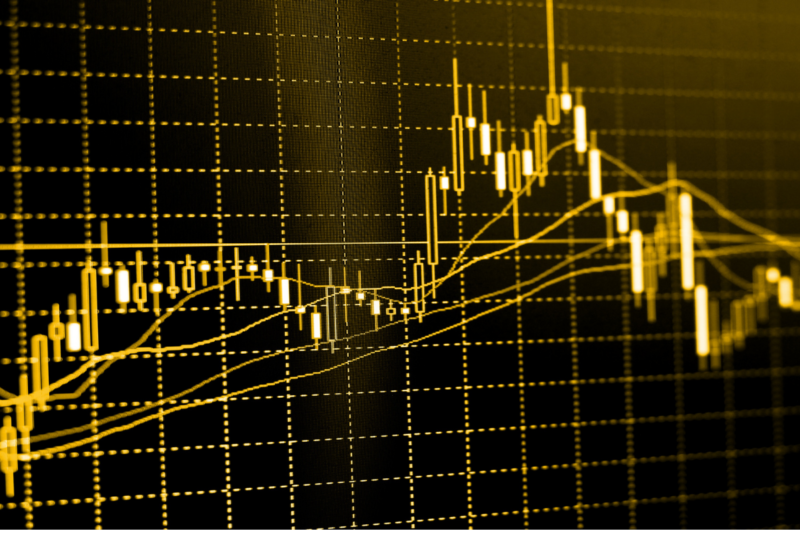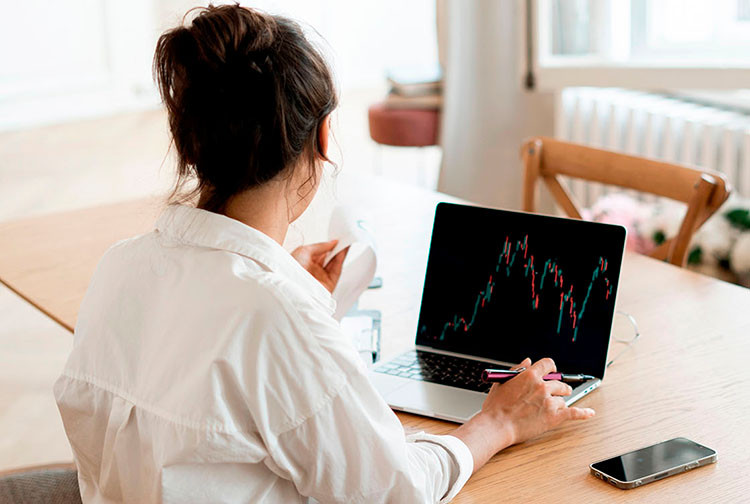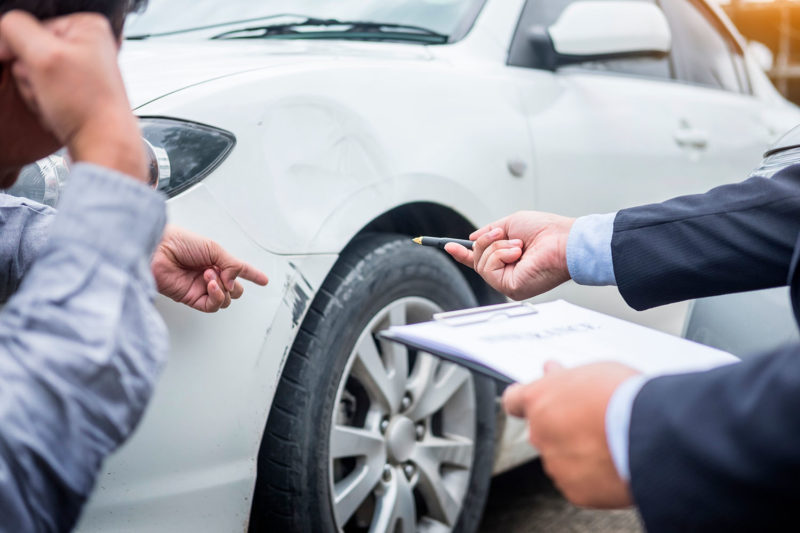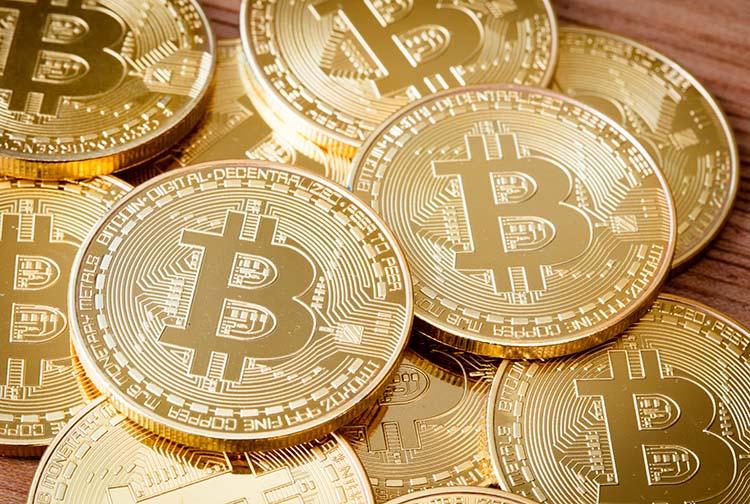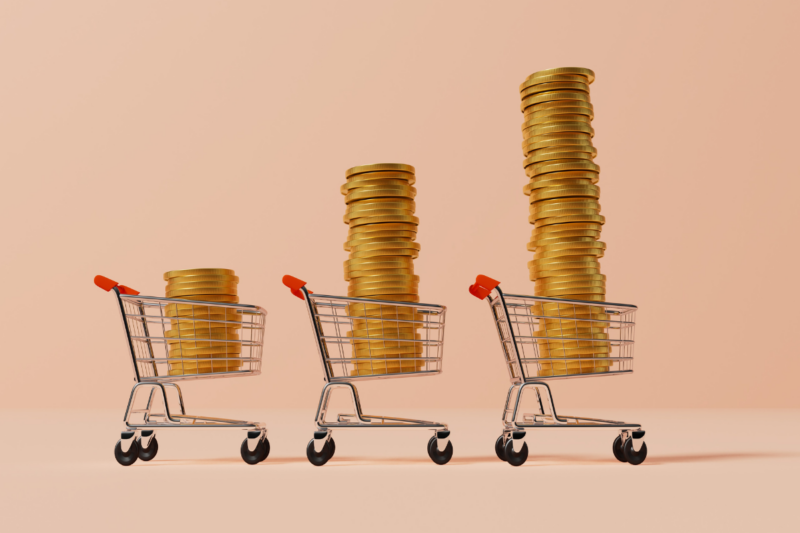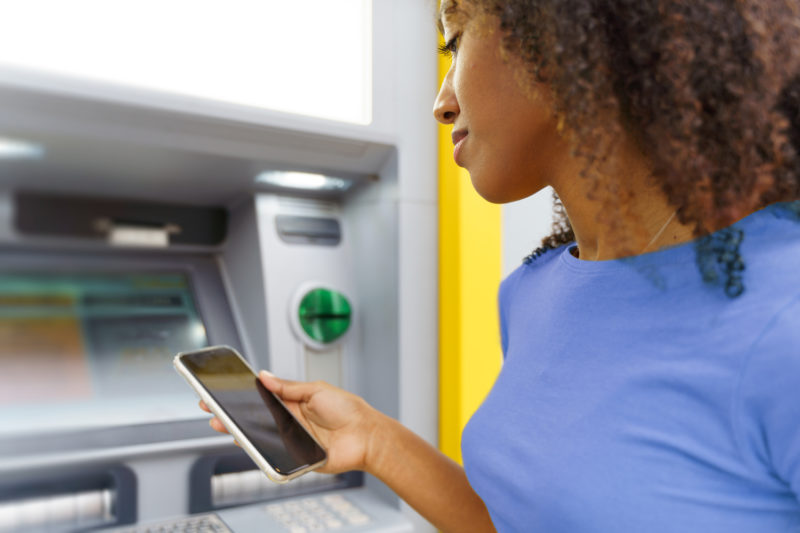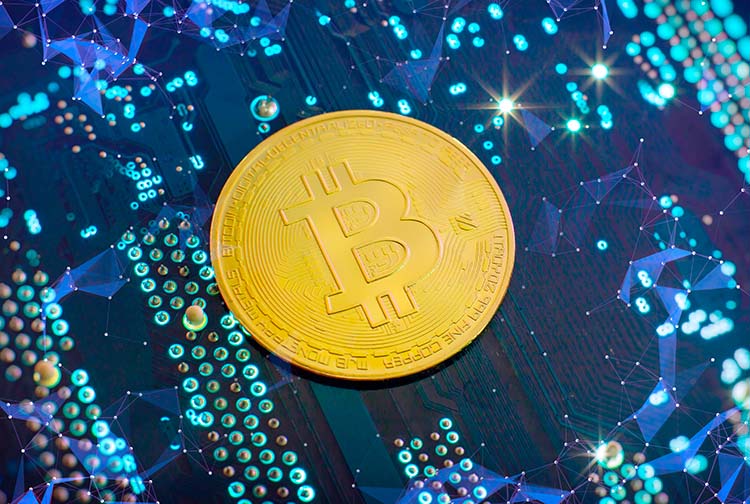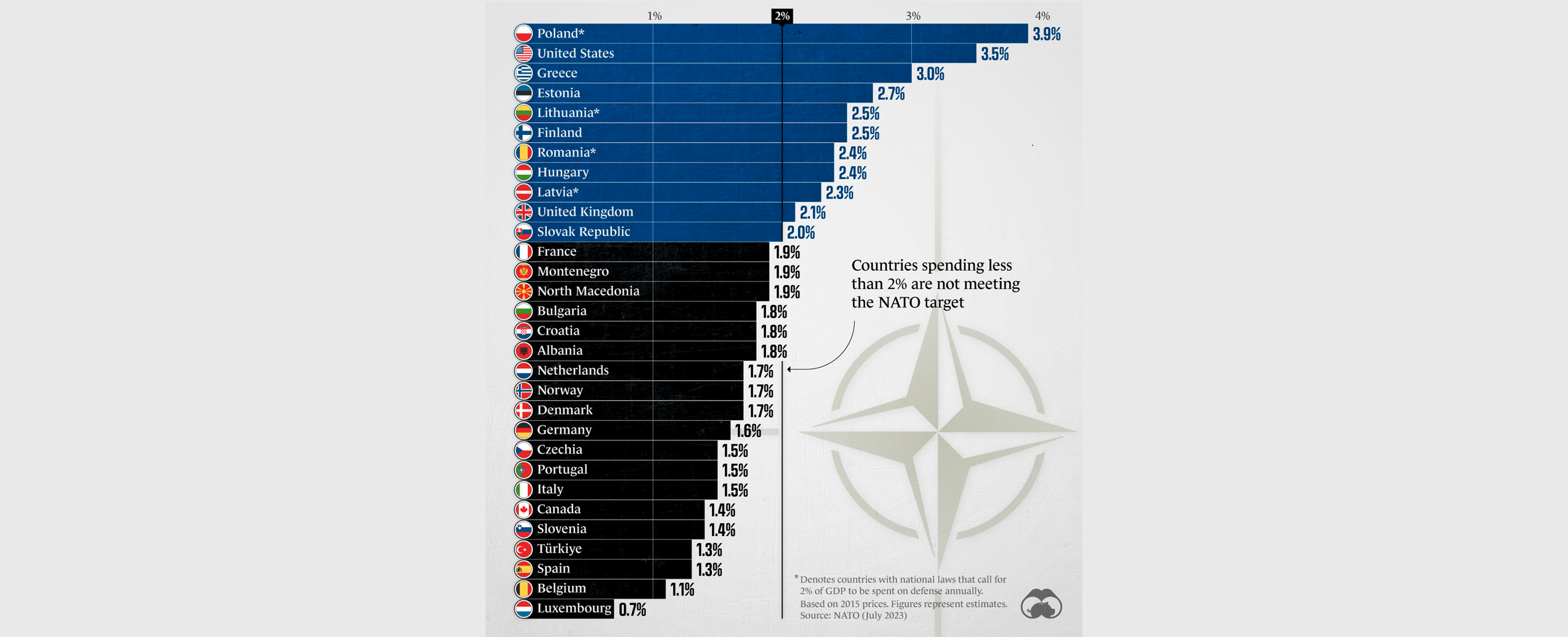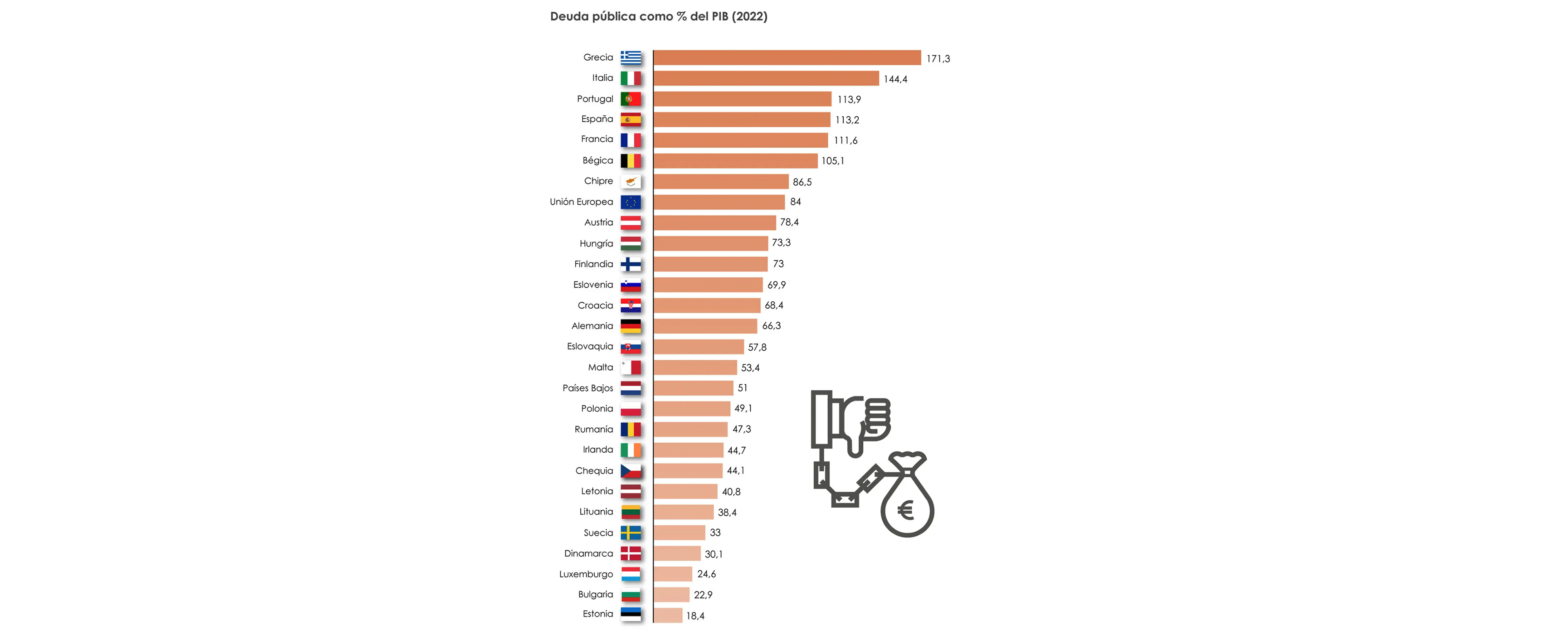Payment methods: less cash and more control
Cash payments, less susceptible to being controlled by the government than digital payments, are being completely replaced by card payments, transfers or other electronic means. Should we be concerned? What options are there on the market? We talk about it with Iu Alemany, Head of Customer Service at 11Onze, in a new episode of La Plaça, Territori 17’s radio show.
Advances in technology, the rise of online shopping and the digitisation of finance have led to the popularity of electronic means of payment. Many countries have already started a transition process with the aim of phasing out cash payments to the point of their possible total disappearance in the not-too-distant future.
On the one hand, the new generations of digital natives are more used to paying via mobile phone or smartwatch than with cash. On the other hand, governments see a good opportunity to fight the black economy and tax fraud by restricting cash payments that are more difficult to trace.
Thus, more and more limits are being imposed on cash payments, such as the European Union limiting cash purchases to 10,000 euros, or the Spanish state going much further by banning cash transactions of more than 1,000 euros in cases where one of the parties is acting in a professional capacity.
An economy subordinated to the banking system
The elimination of cash payments facilitates the bankarization of the economy, i.e. the State’s control over the transactions carried out by individuals and companies through the information provided by the financial system. Cryptocurrencies and blockchain technology have positioned themselves as an alternative to this centralisation of finances, but states have also increased scrutiny and limited the use of such transactions.
In this context, several countries around the world have begun to explore the possibility of issuing central bank-issued digital currencies (CBDCs) – the European Central Bank has for some years now been working on the creation of the digital euro – which would give them unprecedented control over citizens’ money.
Increasing citizens’ dependence on the banking system will reduce the shadow economy, but it may also put our freedoms at risk and affect those most at risk of social exclusion. As Iu Alemany points out, “behind all this, there is a desire to have more control over the economy and the population and, if necessary, at any given moment to open or close the tap”.
11Onze is the community fintech of Catalonia. Open an account by downloading the super app El Canut for Android or iOS and join the revolution!
Despite a 10% reduction in the price of raw materials, the CPI for food in Catalonia rises to 4.7%. Experts point out that the sector in Europe is taking advantage of this to pass on part of the cost increases of recent years, and other parts of the chain could be expanding margins.
According to data from the Consumer Price Index for February, food is now 4.7% more expensive in Catalonia than it was a year ago. The statistics from the National Statistics Institute for Spain as a whole are even worse, with food prices rising by 5.3% in February compared to the same month last year.
According to INE, over the last twelve months, the foods that have experienced the biggest rises in Spain are olive oil (67%), fruit and vegetable juices (18.8%), potatoes (11.6%), pork (11%), confectionery (10.8%), chocolate (10%), fresh or chilled fruit (9.1%), salt, spices, and herbs (8.8%), sheep and goat meat (8.1%) and, finally, ice cream (7.9%).
Less supply?
The Spanish government blames part of this price rise on a temporary reduction in supply due to “unfavourable weather conditions” in many EU countries, which is reducing production. In fact, as we indicated in another article, Catalonia is suffering the most severe drought since 2008. And it is true that this winter greenhouses have been closed in several European countries because the price of gas is making them loss-making.
However, this argument is not very solid when it comes to justifying the high prices if we take into account that the data of the FAO (The Food and Agriculture Organization of the United Nations) food price index stood at 117.3 points in February 2024, 0.9 points (0.7%) below its revised January level, and 14 points below its February 2023 level of 131.
Impact of costs
Many analysts point out that the price rises have served to offset part of the increase in production costs suffered by the agri-food sector in recent years. These affect such important items as seeds, fertilisers, animal feed and energy.
Fertilisers tripled in price, although they subsequently became 40% cheaper from spring onwards, when they reached their highest price; it is estimated that feed has risen by more than 80% since 2019; and, as for energy, the price per megawatt-hour reached more than 300 euros and the price of a barrel of Brent oil reached 120 euros.
In any case, it is not clear that higher food prices always translate into higher incomes for producers. In this sense, there is much debate about which actors in the food chain are taking advantage of the situation to increase their margins. What is certain is that even the president of Mercadona, Juan Roig, has just admitted that his chain has raised prices “a huge amount”.
11Onze is the community fintech of Catalonia. Open an account by downloading the app El Canut for Android or iOS and join the revolution!
Grifols shares have come to lose more than half their value since the vulture fund Gotham City Research published a report on 9 January questioning the Catalan pharmaceutical company’s accounting practices. Are we facing a case of market manipulation?
On 26 January, the multinational pharmaceutical company Grifols filed a lawsuit in the Southern District Court of New York, in the United States, against the entire Gotham City Research network for “publishing and distributing” a report “containing falsehoods about the accounting, communications, finances and integrity” of the pharmaceutical group.
In a statement to the Spanish Securities and Exchange Commission (CNMV), Grifols explained that its complaint alleges that Gotham City Research, in addition to publishing and distributing the report containing falsehoods about the company’s accounting practices, obtained “a substantial short position against Grifols”.
In the report published by Gotham on 9 January, the hedge fund accuses Grifols of falsifying its accounts and criticises the relationships that exist between management directors, family members and the various companies involved: “We are particularly concerned that these management executives and the parties involved are listed at different times as shareholders, directors, creditors, debtors or advisors of Grifols, all at the same time”.
Specifically, the US fund argues that the Catalan multinational “manipulates debt and EBITDA to artificially reduce debt by six times, when, in reality, it is between ten and thirteen times EBITDA”, which is why it argues that its shares are worthless. In addition, he also questions the debt of Scranton Enterprises – one of the companies through which the Grifols family controls the pharmaceutical company – pointing out that it has a leverage of 27 times its EBITDA.
What is Gotham City Research, and how does it operate?
Gotham City Research is a consulting and research firm founded by Dan Yu, a Wall Street analyst who also acts as a hedge fund. Ten years ago it became famous for causing the collapse of Gowex, a Spanish company specialising in the creation of free Wi-Fi networks.
These hedge funds, also known as vulture funds, have a business model, a priori lawful from a legal point of view, based on making profits from the stock market collapse of the companies they are targeting. In other words, they take bearish positions using short selling or derivatives to profit when shares or the market falls.
Their modus operandi involves choosing a company they consider to be overvalued and potentially vulnerable. They then borrow shares in this company – which they have to pay back within an agreed period – and sell them on the market. When these shares lose value on the stock market, they buy them back and then return them to the entity that lent them to them, keeping the difference.
Therefore, the more the share price has fallen, the more profit these funds make. The possible conflict of interest or market manipulation can occur because some of these funds, as in the case of Gotham City Research, are the ones who directly cause the collapse of the company in which they have taken a short position. They do so by publishing reports in which they question the financial state of these companies.
Grifols shares plunge and lose half their value
Since Gotham published its first report, it has not ceased its attacks on the pharmaceutical multinational, to the point that Grifols’ share price could not get back on its feet and has lost more than 50% of its market capitalisation, to the tune of more than 4.5 billion euros.
When it rains, it pours, so early last week, the credit rating agency Moody’s put Grifols’ debt rating under review, with the risk of a possible downgrade justified by the company’s lower cash generation and the delay in publishing its audited accounts.
This scenario did not change until last Friday, when its shares soared by up to 20% after the pharmaceutical company published its audited accounts, greenlighted “without exceptions” by KPMG, as reported by the company to the CNMV.
There is no denying that Grifols has debt problems, which have led it to make a series of changes at the core of its internal power that have resulted in a whole series of executives leaving the company over the last two years. The pharmaceutical company has senior managers dedicated to managing this debt. But beyond these well-known problems, it remains to be seen whether the information published by Gotham is true or false.
Investigation of possible criminal conduct
The CNMV is analysing whether Gotham complied with the requirements of the regulations on the dissemination of misleading information, at the same time as it is studying the information published by Grifols. Rodrigo Buenaventura, chairman of the supervisory body, said on Tuesday that they had requested further clarifications and additional information from the Catalan company, needing more time to conclude their investigation. “We just received them a few days ago and still need a few more weeks”.
If the allegations in Gotham’s report are ultimately confirmed, Grifols’ conduct could amount to a corporate crime of false accounting and misrepresentation to investors. On the other hand, if the information in the report is false, the hedge fund could be charged with market manipulation.
It would not be the first or the last time that a company has falsified its accounts, and it is certainly true that consultancy and analysis firms play an important role in complementing financial and market supervisory bodies. However, when these analyses come from hedge funds specialised in short-selling, there is a risk that the cure will be worse than the disease.
11Onze Recommends Bitvavo, cryptocurrency trading made easy, safe and at a good value.
Will the arrival of the digital euro mean the disappearance of cash, will it be a tool for greater control over citizens, and what are the European Central Bank’s tricks to encourage its introduction? From 11Onze, we offer answers to eleven fundamental questions about the digital euro.
Christine Lagarde, President of the European Central Bank (ECB), recently justified the need for a digital euro because of the “potentially disruptive transformation” that the payment model is undergoing due to the increase in digital transactions, the appearance of new digital assets and the entry of big techs into the payments market.
The rise of digital payments is illustrated by an ECB study, which indicates that the value of card payments (46 %) has already surpassed that of cash payments (42 %). And that is not counting other forms of payment such as mobile applications. Given this reality, Lagarde warned that money as we know it could lose its role as a monetary anchor, “threatening its key role in ensuring confidence in payments”.
Without this “public anchor”, the emergence of new types of digital assets, such as cryptocurrencies, could generate “instability and confusion among citizens about what is money and what is not”, according to the ECB president, who warned about the volatility of crypto-assets and the need to develop regulation.
In addition, Lagarde indicated that the entry of big techs into the payments market “could increase the risk of market dominance and dependence on foreign payment technologies”, arguing that “currently more than two thirds of card payment transactions in Europe are handled by companies based outside the European Union”.
In this context, the European Commission is expected to make a proposal on the legal framework for the digital euro later this semester. There are still many unknowns about the future currency, although the European Central Bank has already outlined what the broad outlines of its implementation should be. However, we should not forget that its success or failure will ultimately depend on the degree of adoption it achieves among the citizens of the euro area.
Will the digital euro replace cash?
No. The ECB has made it clear: the digital euro would be a complement to cash, not a substitute for it, so banknotes and coins will remain in circulation. The idea is that the digital euro will work in parallel to cash to meet the growing consumer demand for fast and secure digital payments. But its role goes beyond that. According to the ECB President, the digital euro will “ensure that money continues to be denominated in euro” and will strengthen “Europe’s autonomy”.
What is the timetable for its introduction?
A research phase for the project began in July 2021 and should be completed by October 2023. In parallel, the European Commission is due to draw up a proposal for a legal framework for the digital euro in the coming months. By the end of this year, the ECB should decide whether to move to the next phase, focusing on the development of integrated services. In this phase, which could last between one and three years, tests and possible real experiments with the digital euro would be carried out. Against this background, experts estimate that the digital euro could be operational in 2025 or 2026.
Will it be considered legal tender?
All indications are that it will. The ECB President has indicated that “it would be unprecedented to issue central bank money for retail payments without legal tender status just because it circulates electronically”. She added that “the digital euro can only function as a monetary anchor if it becomes a convenient digital medium of exchange that is part of the everyday life of Europeans”. In this respect, Lagarde pointed out that, to achieve sufficient network effects, the use of the digital euro should be extended not only to e-commerce and peer-to-peer payments but also to digital payments in physical shops, which accounted for 40 billion transactions in 2019.
Will there be parity between digital and physical euros?
Yes, in the words of Christine Lagarde, the digital euro will “safeguard citizens’ confidence that a euro is a euro by allowing them to convert private money into digital central bank money at parity”.
How much privacy will it offer?
Although 43% of Europeans rated privacy as the most relevant aspect of the digital euro, the ECB President has acknowledged that “the total anonymity offered by cash does not seem a viable option” for the digital euro. However, the European banking regulator indicates that the digital euro would allow payments to be made without sharing data with third parties unless this is necessary to prevent illicit activities. And it warns that for payments to remain private, different types of data would need to be protected, including the identity of the user, the details of each payment (e.g. the amount) and transaction metadata such as the IP address of the device used. In this respect, it is likely that there will be different degrees of privacy for different payments and that users will have to identify themselves the first time they access digital euro services. Lagarde specified that “at least an equal level of privacy should be provided as in current electronic payment solutions” and noted that it is being explored whether the digital euro “could replicate some features of cash and allow for greater privacy for low-value, low-risk payments, including offline payments”.
Will it be an alternative currency within the Eurosystem?
No. The digital euro would just be another way of paying in euros and would be convertible at parity with physical banknotes. The ECB insists that the aim is to respond to the growing preference of citizens and businesses for digital payments.
What advantages will it have over stablecoins and crypto-assets?
The digital euro will be supported by the ECB, which recalls that one of the tasks entrusted to central banks is to “maintain the value of money, regardless of its physical or digital form”. Although the high inflation of recent times calls into question their efficiency in fulfilling this mandate, it is clear that the ECB’s backing will guarantee greater stability than that exhibited by the highly volatile stablecoins and cryptoa-ssets. The European body warns that “the stability and reliability of stablecoins depend on the entity issuing them and the credibility and enforceability of its commitment to maintain their value over time”. It adds that where there is no recognised entity responsible for a crypto-asset, consumers cannot claim their rights. Moreover, the ECB warns of the risk of private issuers using personal data for commercial purposes.
What incentives will consumers have to use the digital euro?
The ECB ensures that the digital euro will be a digital means of payment that is as secure, easy to use and cheap as cash is today. The idea is that it will be free of charge for people using it for ordinary payments and that it can be used anywhere in the euro area. In a world where electronic payments are increasingly common, the digital euro would offer individuals and businesses an additional option to pay using central bank money. In addition, the digital euro could offer advanced features, such as automated payment functions or some form of digital identity.
Will there be limits on the conversion from physical to digital euros?
Probably. Options to prevent large amounts of digital euros from being held as a risk-free investment are being evaluated.
Will there be different levels of remuneration?
This is also quite possible. According to the ECB, if digital euro holdings were remunerated, the remuneration of the ordinary (i.e. “tier one”) retail payment leg would be zero or positive and thus never lower than that of cash. The European banking regulator considers that the remuneration of “level two” should be somewhat lower than that of assets considered safe. The aim would be to prevent the digital euro from becoming a form of investment.
Will it be based on blockchain technology?
This has not yet been decided. The Eurosystem is considering different approaches and technologies to create the digital euro. This includes centralised and decentralised solutions, such as blockchain, but no decision has yet been taken.
In a world marked by the payment revolution and the rise of crypto-assets, which are eroding the role of central banks and fiat currencies, the ECB aims for the digital euro to become “the best way to manage the transition to the digital age“.
11Onze is the community fintech of Catalonia. Open an account by downloading the super app El Canut for Android or iOS and join the revolution!
Poor US economic data and expectations of interest rate cuts by the Federal Reserve and the European Central Bank push gold prices to a new all-time high of $2,140.6/oz.
The price of gold reached an all-time high as it looks ahead to the expected rate cuts by the Federal Reserve (Fed) and the European Central Bank (ECB) in June. On Tuesday the 5th, it reached a new record high of 2,140.6 dollars an ounce, surpassing the previous record set on 4 December, when the price rose to 2,135.40 dollars.
Given that according to the analysis made by Julius Baer, gold prices rise by 15.5% on average over the 12 months following a rate cut if it is followed by a recession, the expectation of a further cut increases investor demand. That said, if no recession exists, prices fall by 7% on average. In any case, it is a move that would affect US bond yields and the dollar and could lead investors to bet on gold as a safe-haven asset.
We should not forget that the European Union and the Eurozone avoided closing 2023 in recession by the narrowest of margins, mainly because the German economy, Europe’s largest, spiralled downwards thanks to the economic sanctions imposed on Russia. The Teutonic country’s industrial production contracted for the first time since the start of the pandemic.
In this context, some financial analysts warn that a possible rate cut by the ECB is unlikely to have a positive economic impact that will be felt before 2025. Jack Allen-Reynolds, an economist at Capital Economics, expects the eurozone economy to “flatline” in the first half of 2024 “as the effects of past monetary tightening continue to take hold and fiscal policy becomes tighter”.
Consumer confidence on the decline
Gold’s strong performance has also been spurred by recently released US economic data, which missed expected targets: the US manufacturing ISM fell to 47.8 in February from 49.5 expected and 49.1 in the previous month. The continued decline in the sector’s performance comes after 28 months of growth.
Meanwhile, according to a survey by the University of Michigan, consumer confidence in February also fell to 76.9 from an estimated 79.6. “Consumer confidence moved sideways this month, falling only two points below January and maintaining the gains in confidence seen over the past three months,” explained Joanne Hsu, the survey’s director.
This loss of consumer confidence reflects “lingering uncertainty about the US economy,” said Dana Peterson, Chief Economist at The Conference Board. This downward sentiment is mirrored among the G7 countries, which recorded significant declines – Britain (-3.2 points), Canada (-2.1 points) and Germany (-2.0 points) – in contrast to Asian countries, where consumer confidence is on the rise across the board.
To discover the best option to protect your savings, enter Preciosos 11Onze. We will help you buy the safe-haven asset par excellence, physical gold, at the best price.
The American multinational investment company has consolidated its position as the largest shareholder of Banco Sabadell, Banco Santander and BBVA, while increasing or maintaining its position as one of the main investors in CaixaBank, Bankinter and Unicaja.
New York-based BlackRock is the world’s largest asset manager. With more than $9 trillion in assets under its management, 70 offices in 30 countries and clients in more than 100, its influence extends far beyond Wall Street, managing investments for clients ranging from individual investors to large corporations and governments.
The list of corporations with assets under its stewardship is almost endless: from technology companies such as Apple, Meta and Microsoft, to oil companies such as ExxonMobil, Chevron and Shell, to banks such as Goldman Sachs, JPMorgan and Bank of America. In fact, it would be easier to list ‘the few’ large global companies that are not part of BlackRock’s stock market portfolio.
In Spain, the presence of the US investment giant is well established. BlackRock is the main shareholder of the Ibex-35, doubling its workforce in the last five years and controlling 42,000 million euros in investment assets. Iberdrola, Red Eléctrica, Repsol, Enagás, Telefónica… and, according to data from the Comisión Nacional del Mercado de Valores (CNMV), also lord and master of Spanish banking.
Over 25% of the shareholding with an investment of more than 6,000 million euros
BlackRock’s presence in Spanish banking shareholdings has increased progressively over the last few years, consolidating its position as the main reference shareholder in the Spanish banking sector.
In the case of BBVA, Banco Santander and Banco Sabadell, BlackRock is their largest shareholder with 7.4%, 6.2% and 4.46% respectively. On the other hand, it is now the third-largest shareholder of CaixaBank, the fifth of Bankinter, and maintains a small stake in Unicaja.
An upward trend implies a greater influence in the management and direction of these banks, but it is not free of controversy due to the possible conflict of interest it could entail. As Gerald Davis warned, BlackRock is a silent giant, but an incredibly powerful one.
If you want to discover the best option to protect your savings, enter Preciosos 11Onze. We will help you buy at the best price the safe-haven asset par excellence: physical gold.
El sector de les fintech ha crescut significativament en els últims anys. Això ha creat noves oportunitats per als consumidors i les empreses, que ara tenen accés a una gran varietat de productes i serveis financers innovadors. Xavi Viñolas, redactor d’11Onze, detalla algunes de les noves tecnologies relacionades amb les fintech.
Préstecs peer-to-peer
Els préstecs peer-to-peer (P2P), són una innovació financera que ha crescut en popularitat en els últims anys. El terme P2P lending fa referència als préstecs entre iguals. És a dir, a través de les plataformes de préstecs P2P com el crowdfunding els inversors poden prestar diners a altres persones o empreses sense la necessitat d’un intermediari financer tradicional, com un banc.
Criptomonedes
Les criptomonedes són monedes digitals que utilitzen la criptografia per assegurar les transaccions i controlar la creació de noves unitats. Es tracta d’uns actius digitals que segueixen guanyant protagonisme en el món financer, amb el Bitcoin com a exemple més conegut. Ofereixen avantatges com la seguretat, la privacitat i la descentralització, però també presenten riscos, com la volatilitat del seu valor.
Blockchain
La tecnologia blockchain, o de cadena de blocs, va ser popularitzada amb la creació del Bitcoin. És una tecnologia que permet fer transaccions entre dues o més persones sense la necessitat d’intermediaris. Ve a ser un llibre de comptabilitat digital on s’emmagatzemen totes les operacions distribuïdes en ordinadors interconnectats a través d’una xarxa P2P, sense necessitat d’un servidor central. Aquesta tecnologia s’ha mostrat clau per les fintech, ja que redueix costos, accelera els processos i millora la seguretat a l’hora de fer pagaments internacionals, verificar la identitat digital dels usuaris o facilitar el micromecenatge.
API
Les API, sigles en anglès d’Application Programming Interfaces, són un conjunt de protocols, mecanismes i eines que permeten la comunicació entre diferents aplicacions informàtiques. En el sector fintech, les API són una eina clau per connectar diferents plataformes i sistemes, permetent la transferència de dades de forma segura i eficient. Per exemple, una fintech que ofereix serveis de pagament podria utilitzar una API per connectar-se amb una plataforma de banca en línia perquè els seus clients puguin transferir diners directament des del seu compte bancari.
11Onze és la fintech comunitària de Catalunya. Obre un compte descarregant la super app El Canut per Android o iOS. Uneix-te a la revolució!
The expansion of the fintech sector and the increasing integration of financial services into mobile apps and e-commerce are revolutionising the way we interact with our money outside traditional banking. But what exactly is embedded finance and why is it becoming so important?
Embedded finance is a model whereby non-banking companies integrate banking services and products directly into their virtual channels through mobile applications or e-commerce platforms. The aim is to allow customers to access financial products and services without having to leave the platform or application they are using, carrying out transactions where the contracting or purchasing process is easy and fast.
This is possible thanks to the use of technologies such as APIs (Application Programming Interfaces), a set of definitions and protocols that enable communication between two software applications and facilitate interconnection between financial services platforms and other sectors through mobile phones in an immediate and intuitive way. This saves time and money when setting up a business, without the need to create an application and all its services from scratch.
A typical case of the use of this technology is online payment, which has become an indispensable tool for consumers. For example, a fintech offering payment services could use an API to connect to an online banking platform so that its customers can transfer money directly from their bank account.
Similarly, e-commerce companies offer payments integrated into their platforms, so that customers do not need to leave the website to make a transaction. This is not only convenient for customers but also offers merchants the possibility to customise their services and improve their efficiency.
The fintech revolution
This technology is especially useful for fintechs that do not have the resources to develop their own banking products or that want to offer more accessible and personalised financial services to their customers, providing an alternative to the traditional banking model. Previously, customers had to visit a bank branch or cash point to access financial services, but now they have access through the platforms and apps they already use, reducing the need for travel, paperwork and waiting.
In addition, embedded finance has also enabled the creation of new business models. For example, e-commerce platforms can offer financing to their customers for their purchases, eliminating the need to use a traditional financial institution. This can help companies improve customer loyalty and increase sales
Embedded finance can also help improve financial inclusion. Many people do not have a bank account or are unable to access financial services for various reasons, such as poverty or lack of access to the banking system. Through embedded finance, these people can access basic financial services from a simple mobile device.
In short, the symbiosis between banks, technology providers and distributors of financial products has created an ecosystem that is transforming the sector, broadening the range of services on offer, fostering competitiveness and improving the customer experience with greater accessibility, convenience, and flexibility.
11Onze is the community fintech of Catalonia. Open an account by downloading the app El Canut for Android or iOS and join the revolution!
Military spending is at the centre of the debate because conflict is increasing. At the same time, the public debt of the Member States far exceeds the limits of the EU Stability Pact. Will the military necessity drive the union of European capital markets? Are they looking to capture citizens’ savings for the war?
The North Atlantic Treaty Organization was born in 1949 with a very clear objective: to protect the member countries of the Soviet Union. The current situation, with the entry of Sweden and the interest of most of the countries bordering Russia, forces us to have a look at the military spending of the member states. The war in Ukraine has turned Europe into a powder keg and the EU seems determined to maintain the onslaught with or without the help of the United States.
At this point, it is necessary to pay attention to who finances NATO since, the candidate for the presidency of the United States Donald Trump, announced that if he were to become president again he would not protect the countries that do not pay their part of the budget of the Atlantic Alliance. And it is true that around 69% of the budget is provided by the United States, reaching 860,000 million dollars. Therefore, it is true that the American contribution is much higher than the 68,000 million of Germany, the 66,000 of the United Kingdom or the 19,000 of Spain.
Who tries harder?
But it is necessary to put in context the contribution of the Member States because the effort is not the same for all economies. The objective is for each member to contribute at least 2% of their GDP. As we can see in the graph, there are many countries, including Spain, that do not inherit. But we also see interesting facts: Poland contributes, proportionately, more than the United States. And some of the countries that struggle the most border Russia and many were part of the Soviet Union, that is to say, they fear Putin based on common history.
European public debt
Given this situation, it should be remembered that the president of the European Commission, Ursula von der Leyen, announced her intention to continue increasing defence spending in the countries of the European Union. And here is another problem: most countries exceed the 60% debt allowed by the renewed Stability Pact. In other words, European countries must reduce their public debt at the same time that they are obliged to increase their military spending. Is it possible to square the circle?
Where will the money come from?
Although it is true that the Stability Pact of the EU includes the exception to deviating from the debt objectives for reasons such as defence, it is also true that large deviations would affect the credibility of the European countries in the markets, so it would be more difficult to finance.
In this context, a piece of news that has gone largely unnoticed, which is the intention to promote the union of European capital markets, gains particular importance. This is an old proposal that the French government is leading and that has Spanish support, but still does not have the German approval. Germany wants the 27 countries to join the union of capitals suddenly, while France sees it as impossible and plans to do it in phases.
The idea is to launch a common savings product to attract private capital. In other words, they want to attract the deposits of the citizens of the European Union. According to the French finance minister, Bruno Le Maire, it is necessary to “put the Europeans’ savings to work” to boost the massive investments that the European Union must make in the coming years. The official discourse is that capital must be obtained so that European startups do not end up asking American or Persian Gulf investors for money to advance their projects. Therefore, the idea would be to promote a certain economic independence from the EU. But the truth is that these massive investments have two-star themes: the energy transition and defence.
In this way, everything points to the fact that, during 2024, we will see the birth of a European investment product that will serve for EU countries to increase their participation in NATO without damaging much more their already punished public debt. The mobilization of savings for the war has already begun.
Accelerating digitalisation has been one of the most important challenges for SMEs during the pandemic. The data say that 70% of companies in Spain have been digitalised during the pandemic, according to the consulting firm IPG. This means that 7 out of 10 have opened an online store.
While many SMEs have been thinking about digitalisation for years and it was one of the outstanding issues, the pandemic has accelerated and made many companies go online in record time and, probably thanks to this, they have not had to close. A company with less than 250 employees whose turnover does not exceed 5 million Euro is considered an SME.
The cost of digitalisation
When an SME searches the internet for a way to go digital, it will probably come up with many offers and very cheap prices from companies that are dedicated to this task. It can even buy a domain, which will cost less, as you can have one for €10 a year. It can also find many pages that provide with templates and, if it is accompanied by images, it can make a website on its own.
But, as the saying goes, you can’t teach an old dog new tricks.
There are many elements to consider when creating an e-commerce. It depends on the business you have, whether you have an extensive catalogue, whether you work internationally, or if you constantly have new products. The best thing to do when digitalising your business is to hire an agency to help you get this big project up and running. There are many things to keep in mind, and having a good e-commerce that works perfectly and that does not have errors will be the key to success.
Things to keep in mind
Before launching an online store, keep in mind:
- Make an analysis of the competition: surf the internet (visit websites and social networks).
- Make an analysis of the own company: identify your own e-commerce. Decide if it can be done by the company’s staff or if external help is needed, for example, an agency specialising in web pages.
- Take into account the stipulated time required to make a web page, as there may always be some surprise. Therefore, the launch date of the business must not be shared with the networks until it is 100% sure.
- Once the website is up and running, it needs to be constantly updated.
- You must be very fast: when a user asks about a product or service, you must answer as soon as possible because, otherwise, there is a risk that they may end up buying it elsewhere.
The pandemic has changed consumer habits, and it has also made it clear that if you want to keep the business going, you need to have an online site for potential customers to find and see what is offered.
We are in the age of omnichannelity, and you need to have the ability to satisfy both a customer who buys in the physical store and a customer who buys online, through a phone call, through an email, or even through the social media of the business.
The past
Years ago, it was unthinkable that a company could earn customers with a website. Until then, the usual technique for getting buyers was having a sales team that, along with a marketing strategy, did what is called “cold calling”, that is, selling the product or service from scratch. This commercial task, on many occasions, could last for weeks or months.
The present
Today, when you open a business, even if services are offered, you need to have a website where potential customers can see what is being offered, what has been done, the team that makes up the company, and an essential thing, its business philosophy (mission and vision). With just this information, the potential customer can get an idea of who they are.
Apparently, it may seem much easier to reach the customer through a website than doing it with a sales team, but it’s not quite that good. It’s not all about having a website. Social media is another tool that must be kept in mind in today’s society, which is permanently connected.
During the pandemic, companies have had to digitalise their businesses. This has been the only way to earn income. The data tells us that 7 out of 10 companies that did not have an e-commerce before the confinement had to go digital if they didn’t want to close the business. The food, fashion, electronics, beauty, and household products sectors are the ones that have benefited the most from having taken this step.
Do you want to be the first to receive the latest news about 11Onze? Click here to subscribe to our Telegram channel

